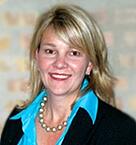Reflections on Diversity, Inclusion and Equity: 8 Ways to Be Better

I recently attended a virtual panel focused on the topic of race and inclusion in the workplace. “Reflecting on Race: Moving Forward for Inclusion Success” was hosted by COLOR Magazine & WMFDP | FDP Global and featured leaders in the Diversity, Inclusion, and Equity field from Applied Materials, Novant Health, Sandia National Laboratories, among other organizations.
I learned so much and appreciated hearing the perspectives from the experts and questions on the minds of other leaders and communicators who joined the session.
Here are my key takeaways from the session, which I share with you to spark further conversation and ideas for positive change in your organization:
- Every organization has “Insiders” and “Outsiders.” Insiders tend to be white males, and the Outsiders tend to be the under represented. It was interesting to me that Insiders don’t usually see themselves as a group; rather, they view themselves as individuals. Identifying the Insiders and helping them see how they can influence and drive the change is an important step. When developing stakeholder engagement and communication plans, go beyond traditional segmentation – such as roles, regions, or even tenure – and reach Insider and Outsider groups as well.
- All too often, Insiders look to the Outsiders for support in solving the problem. But the reality is, for systemic cultural change to work, it must be led by the Insiders because it’s their mindsets that need to shift. To get Insiders to be real partners in driving the change, help them move past the worry of making mistakes and see that progress is better than perfection.
- Lack of diversity and inclusion can’t be solved through recruitment alone or by HR. Organizational culture is something that’s owned by everyone. An organization that lacks a culture that embraces diversity, inclusion, and equity won’t keep people who are looking for diversity, inclusion, and equity. They will leave. Find ways to open up your culture so people can be who they are and be successful.
- To make Diversity, Inclusion, and Equity “stick,” make it part of the business strategy and directly aligned to your organization’s imperatives. View this as the talent opportunity, performance enabler, and innovation enabler that it is.
- Measure what matters. Organizations leading in this space have metrics in place for measuring diversity, inclusion, engagement, and equality. They don’t aggregate the numbers because that creates false positives. They are measuring equality as well, including health equity, to identify and close gaps where minority groups have different health abilities and risks.
- Quantitative and qualitative metrics are important. The experts shared that overall, leaders need to listen more to the stories and experiences of people who are not like them. All too often, the listening never happens, or it’s only during exit interviews, in which case, it’s too late. Let’s help leaders get better at listening, having these conversations, and having empathy.
- Leverage the experience and expertise of Employee Resources Groups (ERGs) to advance your business. I loved hearing an example of how a Latino ERG in a healthcare organization played a lead role in creating a special patient site to reach the Latino community. They led focus groups and shaped the content, making it authentic.
- Attracting and retaining the right talent is best when it’s coordinated vs. a series of individual leadership decisions. We need to help leaders think more diversely so each person makes decisions with diversity, inclusion, and equity in mind. Collectively, it adds up to real change. At the same time, no individual needs to wait for the company to do what’s right.
As leaders, it’s important we continue to learn how to be effective allies as we drive positive change in our organizations, and I’m grateful to have learned from these experts.
To watch the session playback, visit this link.
In what ways can you use these insights to bring greater diversity, inclusion, and equity in your organization?
—Kate Bushnell
 Kate is President & Head of Client Service at The Grossman Group and leads the team of thoughtpartners™ to deliver innovative and strategic communication solutions for clients that address their everyday and defining business challenges. She's worked with leaders across a variety of functions and industries, including Hillrom, Lockheed Martin, Microsoft, NYU Langone Health, SC Johnson, The Hartford, Tecomet and USP, among others. Read her complete bio here.
Kate is President & Head of Client Service at The Grossman Group and leads the team of thoughtpartners™ to deliver innovative and strategic communication solutions for clients that address their everyday and defining business challenges. She's worked with leaders across a variety of functions and industries, including Hillrom, Lockheed Martin, Microsoft, NYU Langone Health, SC Johnson, The Hartford, Tecomet and USP, among others. Read her complete bio here.

Comments on this post